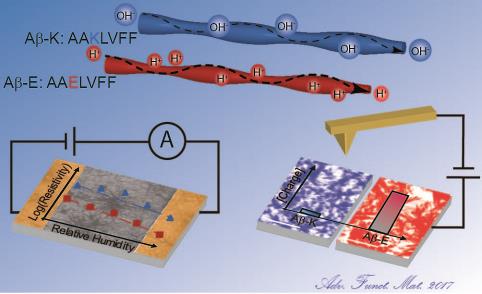
Prof. Nurit Ashkenasy - Research Group
Bio-Electronics and Bio-Sensors

Nanotubes
The self-assembly propensity of peptides has been extensively utilized in recent years for the formation of supramolecular nanostructures. In particular, the self-assembly of peptide into fibrils and nanotubes makes them promising building blocks for electronic and electro-optic applications. However, the mechanisms of charge transfer in these wire like structures, especially in ambient conditions, are not yet fully understood. By combining principles of layer-by-layer deposition with the propensity of d,l a-cyclic peptides to self-assemble into nanotubes, based on β-sheet like interactions, we have developed a novel approach for assembling peptide nanotubes vertically oriented on gold surfaces. Using this novel fabrication methodology, we have fabricated molecular junctions, with conductive atomic force microscopy tip as a second electrode. Studies of the junctions’ current-voltage characteristics as function of the nanotube length revealed an efficient charge transfer in these supramolecular structures with a low current attenuation constant of 0.1 Å-1, which indicate that electron transfer is dominated by hopping. Moreover, the threshold voltage to field-emission dominated transport was found to increase with peptide length in a manner that depends on the nature of the contact with the electrodes. For more information refer to our publication in Nanoscale.
